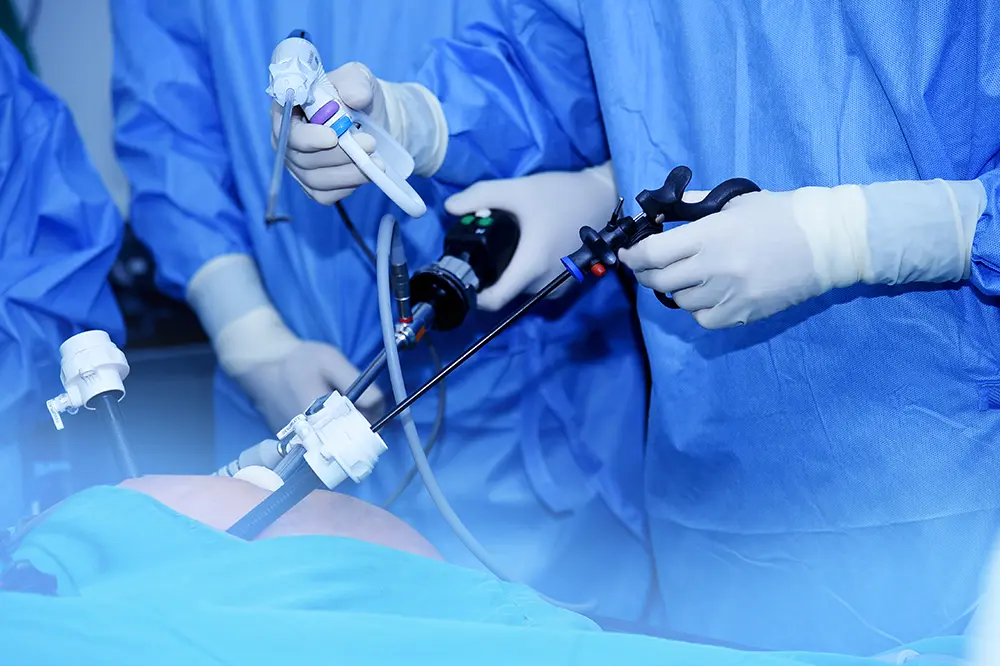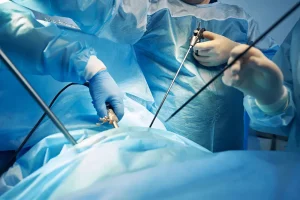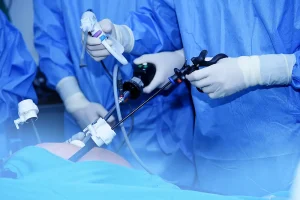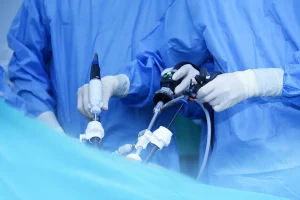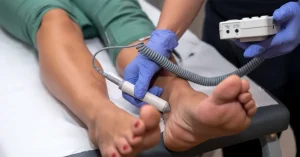Diagnostic laparoscopy is a procedure that allows the doctor to view the inside of the abdomen or pelvis directly.
How Is the Test Performed
This procedure is usually carried out in a hospital or outpatient surgical center under general anesthesia, meaning you will be asleep and feel no pain. It is performed as follows:
- The surgeon makes a small incision below the belly button.
- A needle or hollow tube called a trocar is inserted into the incision. Carbon dioxide gas is introduced into the abdomen through the needle or tube to expand the area, providing more working space and allowing the surgeon to see the organs more clearly.
- A small video camera, called a laparoscope, is then inserted through the trocar to view the inside of the pelvis and abdomen. Additional small incisions may be made if other instruments are required to examine certain organs in more detail.
- For gynecological diagnostic laparoscopy, a dye may be injected into the cervix so the surgeon can assess the fallopian tubes.
- After the examination, the gas, laparoscope, and instruments are removed, and the incisions are closed. Bandages will be placed over the incision sites.
How to Prepare for Diagnostic Laparoscopy
Follow the instructions provided regarding not eating or drinking before the procedure. You may need to stop taking certain medications, including narcotic pain relievers, on the day of the procedure or beforehand. Do not change or stop any medication without first speaking to your healthcare provider. Follow any additional preparation guidelines given by your doctor.
What Will You Feel?
You will not feel pain during the procedure itself. Afterward, the incision areas may be sore, and your doctor may prescribe pain medication to ease discomfort. You might also experience shoulder pain for a few days, caused by irritation of the diaphragm from the gas used during the procedure, as the diaphragm shares nerves with the shoulder. Additionally, you may feel an increased urge to urinate due to the gas pressing on the bladder.
You will remain in the hospital for several hours for recovery before going home, and an overnight stay is usually not required. You will not be allowed to drive yourself home, so someone will need to accompany you and provide transportation.
Why Is the Test Performed?
Diagnostic laparoscopy may be performed for several reasons:
- To determine the cause of pain or detect a growth in the abdomen or pelvis when imaging results such as X-ray or ultrasound are inconclusive.
- To assess internal organ injury after an accident.
- To check for cancer spread before treatment, as treatment plans may change if spread is confirmed.
Normal Results
A normal diagnostic laparoscopy will show no blood in the abdominal cavity, no hernias, no intestinal obstruction, and no visible cancer in the organs. The uterus, fallopian tubes, and ovaries will be normal in size, shape, and color, and the liver will appear normal.
What Do Abnormal Results Mean?
Abnormal findings may indicate various conditions, including:
- Scar tissue in the abdomen or pelvis (adhesions);
- Appendicitis;
- Endometriosis, where uterine lining cells grow outside the uterus;
- Gallbladder inflammation (cholecystitis);
- Ovarian cysts or ovarian cancer;
- Pelvic inflammatory disease (infection of the uterus, ovaries, or fallopian tubes);
- Evidence of injury;
- Cancer spread;
- Tumors;
- Noncancerous growths in the uterus, such as fibroids.
Risks of Diagnostic Laparoscopy
There is a risk of infection, and antibiotics may be given to help prevent this complication. There is also a risk of organ perforation, which could cause intestinal contents to leak into the abdomen. Bleeding into the abdominal cavity is another potential complication. If such issues occur, immediate open surgery (laparotomy) may be required.
Diagnostic laparoscopy may not be possible if the intestines are swollen, if there is fluid in the abdomen (ascites), or if you have had prior abdominal surgery. Contact us today to learn if a diagnostic laparoscopy is right for you.

